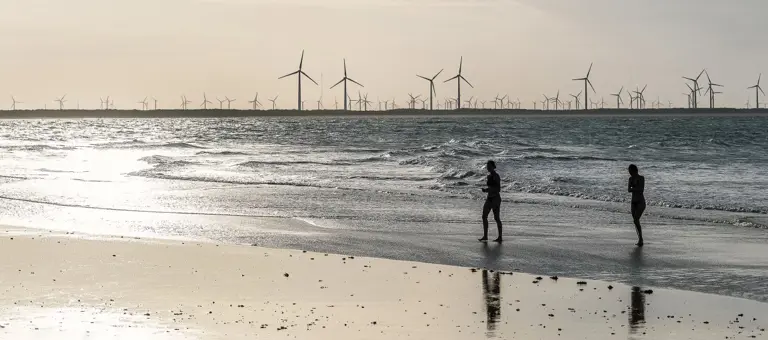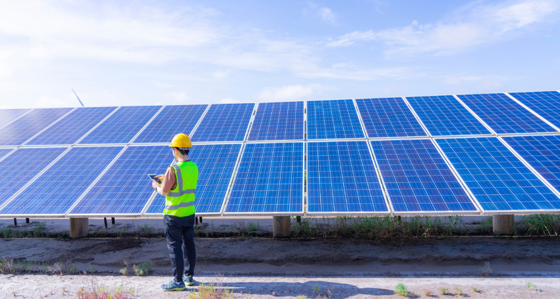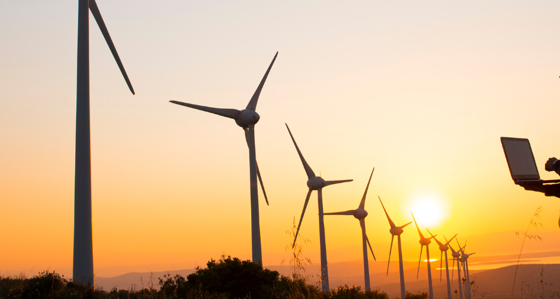
Renewables in Southern Europe
The renewable energy market in Southern Europe is facing a complex phase in its energy transition journey as countries across the region strive to accelerate the build-out of renewables to meet net zero targets, manage high energy price inflation and support EU plans to reduce dependence on Russian gas.
Southern Europe has developed one of largest, most dynamic renewable energy markets in the world, but will have to expand even faster during the next decade to meet ambitious targets to achieve net zero carbon emissions by 2050.
At the same time as ramping up capacity to unprecedented levels, the region is having to contend with rampant energy price inflation and rising costs in the renewable energy supply chain, as well as support European Union plans to pivot energy supply chains away from Russian gas.
In a recent webinar hosted by Baringa as part of its Low Carbon Futures series, a panel of Southern European renewable energy industry experts shared their views on what is required to accelerate the region’s renewable energy build-out and how inflation is affecting these plans.
Panellists:
-
Juan Rivier, Head of Regulation, Iberdrola Renewables
-
Alfonso Ardolino, Head of Pipeline Development – Renewables, ENI Plenitude
-
Pavlos Trichakis, Expert in Low Carbon Solutions, Baringa
-
Alexis Stavropoulos, Expert in Low Carbon Solutions, Baringa
-
Chair: Ilesh Patel, Partner, Energy and Resources, Baringa
Five key trends in the Southern European renewables space emerged from the discussion.
5 major trends:
1. Ambitious renewables targets can supercharge growth…
The EU’s REPowerEU initiative – a flagship policy program to reduce dependence on Russian gas and to speed up the clean energy transition – will have a powerful impact on the development of Southern Europe’s renewable energy market during the next three decades.
The program – which is focused on energy efficiency, diversifying energy imports and accelerating the transition to clean energy – has put ambitious targets in place for renewable energy roll-out. Targets include increasing renewable energy penetration to 45% of the overall energy mix (and up to 80% in the power sector), doubling heat pump deployment and producing 10 million tonnes of green hydrogen by 2030.
For wind and solar installation alone, new capacity of 100 gigawatts will have to be built every year between now and 2030 to meet this target. This is close to three times annual historical rates and lays out a long-term pathway for renewables growth.
2. ...but clearing authorisation and grid bottlenecks will be crucial
The biggest obstacle to reaching 2030 milestones is not capital or demand, but permitting, planning and authorisation bottlenecks.
REPowerEU has noted these constraints and made proposals to expedite the process by classifying renewables developments as projects of overriding public interest, simplifying, and speeding up authorisation processes, and allowing member states to designate ‘go-to’ renewable development areas, where environmental risks are lower and impact assessments can be streamlined.
The challenge will be to ensure these priorities carry over from EU level to member states and are filtered down to regional and local authorities.
One area that REPowerEU hasn’t focused on, but will also require investment and regulatory support, is transmission and distribution build-out. Pushing renewables across existing infrastructure, without additional investment in more grid capacity, could lead to curtailment risks that would slow investment.
3. The inflation challenge
Inflation in the US and Europe is running at levels not seen since the 1970s and 1980s. This is having a significant impact on both renewables supply chain costs and developer margins for ready-to-build assets.
The costs for industrial materials and shipping components from key supplier markets, most notably China, have been rising since 2021. Capital expenditure outgoings are between 25% and 30% higher when compared to last year, reversing the long-term trend of ever decreasing costs for renewable technologies. Land costs for new sites are also escalating.
These rising project costs, coupled with higher wholesale power prices and a thin supply of late-stage development projects, have seen developer margins rise from between €100-€150/kilowatt to as high as €250/kilowatt in 2022.
These inflationary pressures pose significant challenges for projects currently under development, which now face the real risk of cost overruns. There are also potential long-term implications for the cost of energy transition at a time when household budgets are already under pressure.
4. Reshaping wholesale energy markets for the long term
The global spike in gas and EU carbon allowances-prices has pushed wholesale electricity rates to all-time highs, with average monthly prices in Europe running at between three and five times the historical range of €50-€70/megawatt hour. Governments in Spain, Portugal and Italy have responded by undertaking various short-term market interventions, including wholesale gas price caps, VAT reductions and windfall taxes.
These short-term interventions have prompted a wider review of the wholesale energy markets, especially in circumstances where consumers are paying prices for renewable energy that are correlated with fossil fuel market rates. After experiencing this exact scenario directly in 2021, Spain and Portugal formally advocated for a wholesale market redesign to the European Commission, including scope to introduce price caps.
The main argument for repurposing the wholesale energy market is that current structures are not fit for purpose in a net-zero world, where most energy generation will have low variable costs, and will not be beholden to commodities market prices.
The European Commission has allowed member states to intervene in markets in order to protect consumers from high wholesale prices with temporary and targeted measures. Some countries, such as Greece, have responded by introducing bespoke price caps for wind, solar, hydro, and thermal energy.
Following recent energy market volatility, it is understood that the European Commission is now planning a complete overhaul of the wholesale energy market, with proposals for reform potentially coming out as early as the Autumn of 2022.
Establishing an EU-wide wholesale energy market framework (rather than the current status quo where national policies are patched together) will provide certainty and consistency for consumers and energy companies across the region.
Striking a balance between protecting consumers and preserving the long-term attractiveness of European renewables for investors, however, will be crucial if any attempts to reform wholesale markets are to succeed.
5. Finding a fit for complementary renewables
Wind and solar power generation will represent the bulk of new renewable capacity to meet net zero goals, but across Southern Europe there is recognition that energy storage and green hydrogen both have a valuable contribution to make, and various countries have specific goals included in their National Energy and Climate Change Plans.
Italy is targeting a total of 18 gigawatts of energy storage by 2030, from just eight gigawatts today; and five gigawatts of hydrogen electrolyser capacity from virtually none today. Spain, which has hardly any battery storage capacity today, is targeting 20 gigawatts of energy storage by 2030.
In order to develop battery and hydrogen storage infrastructure, however, investment must be encouraged with predictable revenue streams and a stable regulatory environment. Storage providers are still typically classified as just another group power generators, and their true value of providing flexibility is not yet fully recognised.
Expanding renewable energy supply will require investment in adjacent areas like battery storage to address intermittency concerns and ensure security of supply. A supportive regulatory framework and support mechanisms will be required to shepherd in private sector capital and ensure these projects are economically viable.
Related Insights

Podcast - S2 E8 – How ‘Energy-as-a-Service’ models unlock commercial decarbonisation
Tim Meanock, CEO and co-founder of Tallarna, joins Ellen Fraser and Daniel Bolton to discuss Energy-as-a-Service (EaaS) as an innovative solution for commercial decarbonisation.
Read more
Driving UK decarbonisation in a new policy era
At Baringa’s sixth Green Buildings and Transport Forum in November 2024, we discussed domestic decarbonisation in the context of the new UK government.
Read more
Navigating sustainable retrofit in real estate
Achieving successful sustainable retrofitting in real estate can seem like a complex challenge. Discover how your organisation can unlock the strategic value of retrofitting with our new report, commissioned by Barclays and in collaboration with JLL, Travis Perkins and TrustMark.
Read more
Renewables Market Scanning Report
Which are the most attractive markets for investing in renewable assets globally?
Read moreIs digital and AI delivering what your business needs?
Digital and AI can solve your toughest challenges and elevate your business performance. But success isn’t always straightforward. Where can you unlock opportunity? And what does it take to set the foundation for lasting success?